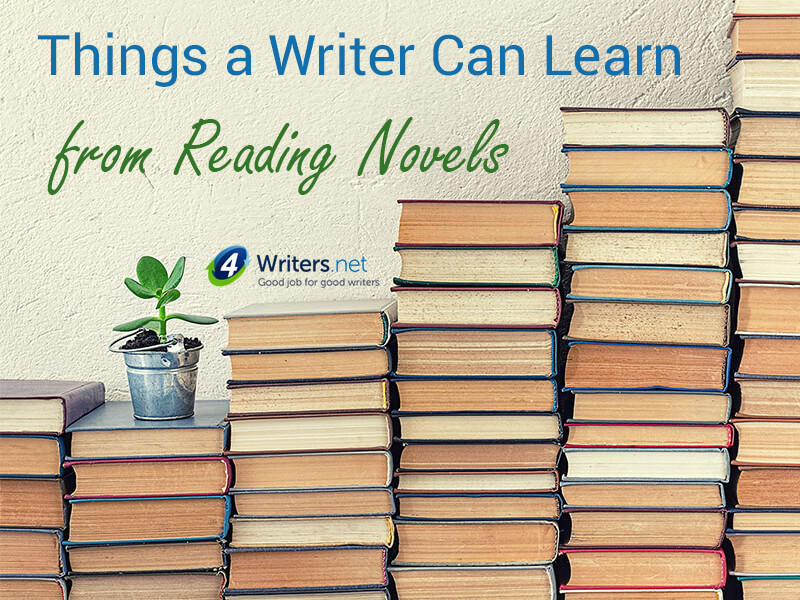How Reading Helps You Become a Better Writer
October 13, 2017| Category: Writing Tips
Being a writer, you should understand that it isn’t only the writing practice that is important for your experience. It’s also reading. Most successful writers constantly read books and do it not just mindlessly enjoying them. They are always searching for the things that make this particular book work.

Keep that in mind when you are thinking about the ways to improve your writing. Do you read books that keep you going and help you learn new writing techniques? Whether you do this or not, you will surely become a better writer by using the following 7 recommendations inspired by amazing novels!
1. Begin in the middle of the action. Let us take the very beginning of Pride and Prejudice? It begins with the dialogue between Mr. and Mrs. Bennett who talk about Mr. Bingley and Mr. Darcy coming to town. Right away, the reader sees the dramatic question of the book (which is how will they marry off their daughters without having any money?) and the obstacle (which is Mr. Bennett’s refusal from visiting Mr. Bingley). And it’s all done through a simple dialogue – with no narration, no wasted words, no journeys into characters’ heads and no background information. This is a very good example of how you can begin your book right in the middle of the action. By doing this, you can capture the reader’s attention from the very beginning and give them some good hooks.
2. Heartbreak makes readers stay with the book. The best example that proves this is The Blind Assassin by Margaret Atwood. There is the heartbreak that makes this book so strong and there is the necessity to keep it in secret that makes it even more powerful. When you see the character living with her loss and not being able to share it with others, you certainly bind emotionally to the book. You can’t stop reading it. You want to know what’s going to happen next to the heroine, how she’s going to overcome everything and find her way in life.
3. Do the unexpected things. In case your narration is expectable, your readers will certainly be disappointed. So it is better if you add some unexpected turns. Add surprises for your reader. Make them anticipate the next twist. This way, you will create the narrative tension and bind your readers to your book. To grasp the idea, let us consider the novels by Dorothy Dunnett. Those are six historical fiction stories that tell about extremely complicated characters. They can even be called one of the most complicated characters you ever see in fiction. This complexity keeps the reader interested. While reading these stories, you can never know what is going to happen next and what the character will do. It is certainly good when the plot suggests surprises, yet, they have to be believable. Moreover, to keep her readers even more interested, Dunnett puts them into the conditions that seem to be hopeless. Moreover, even when you think that the character won’t overcome this situation, they always do – and they do this due to their intelligence. It’s never a coincidence but a well-thought course of events.
4. It isn’t necessary to create beautiful heroines. Often it’s better to create the heroines that don’t conform to ideals. One of the brightest examples of that is Jane Eyre. Yes, she is not a beautiful woman, but her courage makes her an extremely attractive person. And this is much more important.
5. Not all readers will like your protagonist. The main heroine of Little Women, Jo March, is the favorite character for most readers. But still, there are those who don’t like her. Some of the readers didn’t really want to see her story as much and wanted to know more about the lives of other heroines, such as Amy. The same can happen to your character. Even if you try to bring out the best in him or her, there will always be people who won’t like this character. So better don’t try to make your readers like them, but make them interested in the story you are telling.
6. Add drama. There are lots of examples of that. Those are the books by Danielle Steele, Barbara Bradford and, of course, Margaret Mitchell’s Gone with the Wind. All of them teach about the importance of drama, even though sometimes they do this too hard by adding too many emotions. However, the good thing is that they never stand still and just reflect on the meaning of life. They show the transformations of the characters and give the reader a proof that it’s always possible to do something.
7. Tragedy is essential for the triumph. Sometimes writers can be too kind to their characters, wanting only good things to happen to them. Even though it is understandable, it’s bad for the book. By doing this, you can’t show the reader what’s going on inside your character’s soul. Let’s take Lois Lowry’s book A Summer to Die as an example. It tells a story of two sisters, and one of them suffers from leukemia. Eventually, she dies and her 10-year-old sister has to handle this terrible loss. This book doesn’t only make you cry. It also makes you smile at the end, when you see the girl learning to live a new life. Strong, isn’t it?
